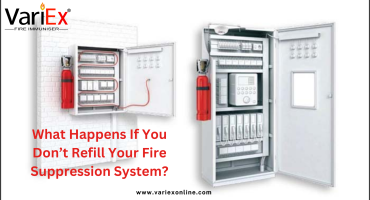![]()
Fire Immuniser
+91-7829629111
Email: info@variex.in
Varistor Technologies Pvt. Ltd.
Block-1, First Floor, Ardente Office One, Hoodi Circle, ITPL Main Road, Bengaluru, Karnataka 560048, IN
What Does A Fire Alarm Interface Do
What Does A Fire Alarm Interface Do
Fire alarms play a crucial role in any residential, commercial, or industrial property by protecting the lives and assets from the perils of a fire outbreak. Yet, when people think about fire alarms, they often picture the traditional alarm bells or horns that blare loudly during emergencies. While these traditional alarm devices are still crucial, they represent only a fraction of an advanced fire alarm system. A key technological aspect that is frequently overlooked but heavily influences the efficacy of these systems is the fire alarm interface.
 Understanding Fire Alarm Systems
Understanding Fire Alarm Systems
The cornerstone of any proactive fire safety strategy is an efficient fire alarm system. It is responsible for promptly detecting and warning people about smoke, fire, or carbon monoxide present in the environment. Primarily, a fire alarm system comprises smoke detectors, alarm initiating devices, alarm notification appliances, control units, power supplies, and wiring, among other components. All these components work in tandem with one another to detect and respond to the potential threat of fire.
The Concept of Fire Alarm Interface
An alarm interface is a vital feature of advanced fire alarm systems that permits direct communication between the fire alarm system and other safety systems or devices installed in a building. This interface optimizes the functionality of the overall fire protection strategy by synchronizing all the standalone fire safety tools into a coordinated fire response protocol.
For instance, with an interface, the action of an automatic heat or smoke detection device can directly communicate with other systems to activate alarm notification devices, shut down air handling systems to prevent the spread of smoke, close fire doors to contain the fire, or even relay the alarm to an off-site monitoring company for emergency assistance. Hence, the fire alarm interface serves as an integral bridge between different fire safety systems, ensuring cohesive and effective responses to a fire emergency.
The Need for A Fire Alarm Interface
Efficiency, speed, and coordination are critical in dealing with any fire emergency. The faster the threat of a fire is detected, the quicker the alert is relayed to both occupants and rescue authorities, and the sooner an automated response is deployed to contain the fire, the better the chances of minimizing injury, loss of life, and property damage. And this is where the fire alarm interface shines.
By enhancing the coordination of various systems and devices installed in a building, the interface reduces the timespan between the detection of an emergency and the response. This includes activating automatic suppression systems, blocking smoke's spread, or notifying occupants and authorities.
Besides, with more buildings featuring sophisticated automation systems like HVAC, security, and energy management systems, the necessity of a fire alarm interface has seen an exponential rise. By interlinking these systems, the interface enhances the overall safety and functionality of a building or facility.
Components of Fire Alarm Interface
The fire alarm interface comprises two major components: an input interface and an output interface. The former receives input signals from various detection devices wired to it and communicates with the alarm control panel to issue corresponding commands. The latter part processes the instructions from the control panel to activate the appropriate response actions by other parts of the system.
Final Thoughts
While often overlooked, a fire alarm interface is an indispensable part of an advanced fire alarm system. Its primary function is to bridge the gap between fire detection and suppression systems, ensuring an optimal and effective response. By improving reaction time and coordination among various systems, the fire alarm interface brings considerable enhancements to fire safety and emergency management efforts.
Therefore, as we continue to see the advancement in fire safety systems and increasingly sophisticated building automation systems, the importance of fire alarm interface will only continue to amplify. It is indeed a silent but essential soldier in the battle against fire emergencies. All potential stakeholders in fire safety including engineers, architects, property managers, and homeowners need to be well aware of its role and benefits to fully harness its capabilities.
Conclusion
In conclusion, the value of a fire alarm interface in loss prevention and property protection cannot be overstated. It allows efficient intercommunication between various systems, leading to a more rapid, coordinated, and effective response in the event of a fire. This ultimately translates into increased safety and prevention of loss of life and property. Establishing a clear understanding of this system and its critical role in fire safety is an important step towards ensuring effective and comprehensive fire protection.
Final Say
At VariEx.in and VariexOnline.com, we specialize in supplying and installing top-quality fire fighting systems and equipment. From fire extinguishers to advanced suppression systems, we offer comprehensive solutions tailored to your needs. Our experienced team ensures precise installation and maintenance for optimal safety.
Trust VariEx for reliable fire protection. Contact us online or call 7829629111 to learn more.
"WHAT YOU CAN READ NEXT"
 Read more +24 November 2023 in Fire Extinguisher
Read more +24 November 2023 in Fire ExtinguisherWhat types of fire extinguishers are available for different fire classes?
 Read more +11 April 2025 in Fire Suppression
Read more +11 April 2025 in Fire Suppression






